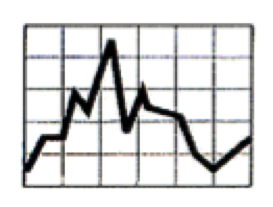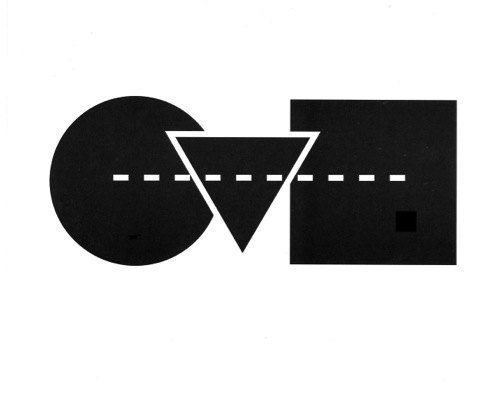
The critical thinking tools introduced here were developed by Dr. Sandra Kaplan, USC under the auspices of OERI, Javits Curriculum Project T.W.O., 1996. Ideas presented here are also adapted from Flip Book, Too Dr. Sandra Kaplan and Bette Gould
The Depth and Complexity Icons are visual prompts designed to help students go beyond surface level understanding of a concept and enhance their ability to think critically. These critical thinking tools help students dig deeper into a concept (depth) and understand that concept with greater complexity.
In fact, to truly understand something, one must be able to speak the language specific to that topic. One cannot have a critical understanding of that same topic without knowing the details, rules and patterns associated with it or understanding how it may have changed and the varied perspectives through which it is viewed.
As you examine each icon, pay close attention to the design, as it will help to reveal its meaning. Keep in mind that our goal is not to teach the icons themselves, but rather to utilize them as visual “thinking” tools to help students gain a critical understanding of a topic or concept.
 Depth Tool- Language of the Discipline
Depth Tool- Language of the Discipline
The meaning of this icon is pretty self-explanatory. The lips represent specialized language related to a topic or concept. This language includes key words, phrases, signs/symbols, figures of speech, abbreviations, and the like.
For example, to truly understand a concept in mathematics, one must speak the “language of math”. A student being asked to add and subtract would need to understand not only terms such as “sum” and “difference”, but also be able to understand mathematical sentences which often include symbols: 27 + (16 – 5) =
In the study of the American Revolution, students would need to know the meaning of “Redcoat” and realize that it isn’t something one can purchase in a store!
 Depth Tool- Details
Depth Tool- Details
As you consider the design of this icon, think about the details of the flower and how each part (flower petals, etc.) make up the whole flower. Details contain the information that enhance understanding. They act as supporting information to a big idea or concept (main idea). Details include: parts, factors, attributes, traits, and variables.
If we go back to our earlier math example: 27 + (16 – 5) = the details are the numbers themselves (the parts that make up the equation). Being able to discern important details of a story is key to one’s ability to critically analyze that text. While we can concede that one of the pigs in the story, The Three Pigs is wearing a red shirt, we can agree that the color of the shirt is extraneous and doesn’t lead to a deeper understanding of the story.
 Depth Tool- Patterns
Depth Tool- Patterns
There’s no surprise that this icon represents patterns (note the circle, line, circle, and zig-zag pattern). If one were asked, it would be a fairly simple task to continue the pattern. Patterns are recurring elements or factors in ideas, objects, stories, and events. They are predictable, repetitive and ordered.
We see patterns in math: number lines, geometry; literature: “Little pigs, little pigs! Let me come in…” ; social studies: patterns in movement and settlement, behavior. The list goes on… Being able to move beyond simple identification of patterns to defining the cause and effect of a pattern or identifying relationships among patterns is rigorous and requires the ability to think critically.
 Depth Tool- Rules
Depth Tool- Rules
Rules are the organizational elements that create structure. This concept is an easy one for students, as they are surrounded by rules (at home, school, in sports, etc). Rules provide structure and represent organization and hierarchy. The meaning is reflected in the design of the icon, which itself has a clear structure.
This icon is often seen in science when looking at classifications. Students may encounter it when examining the structure of a text (compare and contrast, main idea and details, and the like). They may also be asked to apply mathematical rules (formulas) to solve a problem or utilize spelling and grammar rules in writing.
 Depth Tool- Big Idea
Depth Tool- Big Idea
The Big Idea indicates a generalization, principle or theory about the curriculum being studied. It often represents the focus of study or a learning task.
For example, the big idea of a science lesson might be the water cycle. The Big Idea design works well to help students organize the main idea of a story or paragraph (in the roof), which is then supported with evidence (pillars supporting the roof). Students use this with universal themes and generalizations.
 Depth Tool- Ethical Issues
Depth Tool- Ethical Issues
This element of Depth and Complexity represents moral principles (possible rights or wrongs). An easy way to remember the meaning: “Black and white/ right and wrong”. It represents conflicting points of view on events, ideas or issues and involves bias, values, or judgments.
Students will most likely encounter this dimension when analyzing literature or studying social studies. For example, students might be asked to consider ethical issues surrounding Spanish colonization and the establishment of missions along the California coast or to examine ethical issues surrounding a character’s behavior in a story.
 Depth Tool – Trends
Depth Tool – Trends
This is the icon I about which get the most questions. Trends represent the general direction of change. CHANGE is the key word here.
Trends can be explained by external factors or influences that contribute to the change. This icon is represented well by the line graph. Each spike and dip in the graph was caused by something (external factor or influence). Think cause and effect here. One example I like to use is the trend in schools to move away from hardback text books to e-books. What caused the change to go from one to another? Context is huge here! In this case, one reason the trend was caused was the availability of technology
This is different from simple change over time, because for a trend to occur, one thing has to replace, or compete with, another. It’s important to not only examine the “why”, but also the “so now what?” questions. What are the consequences, both intentional and unintentional?
 Depth Tool- Unanswered Questions
Depth Tool- Unanswered Questions
These are questions about anything is is unsolved, unclear, or unproven. These can be ideas that have yet to be explored, are unresolved, or that have missing components (incomplete). Unanswered questions are good!
These are questions we need to pursue. Having said this, many students will be content with simply asking a question and leaving it at that. As educators, we need to push students to pursue the answers to these questions. These are typically questions that are not answered quickly and sometimes they aren’t answerable (yet), but they do have the potential to generate some good thinking and discussion.
 Complexity Tool- Multiple Perspectives
Complexity Tool- Multiple Perspectives
This icon basically represents different points of view on ideas, events, people, and issues.
It often represents an “expert” viewpoint, and is dependent on time and place. This icon falls under the “complexity” section of the Depth and Complexity framework. This icon is easy for students to remember because glasses have lenses through which one must look to see something clearly. Multiple perspectives combines nicely with the other icons. For example, one could look at the different perspectives on rules or on details. One really couldn’t get a good understanding of a conflict without first looking through the different perspectives involved.
 Complexity Tool- Change Over Time
Complexity Tool- Change Over Time
This icon prompts students to explore a concept, event, or person as it relates to time (past/present/future).
Change is inevitable. This powerful tool facilitates a more complex exploration and can easily be applied across disciplines and combined with all the other Depth and Complexity Tools. Consider having students examine how and why rules change over time. How do changing perspectives impact changes in rules? For a different approach, consider having students explore why things haven’t changed.
 Complexity Tool- Across Disciplines
Complexity Tool- Across Disciplines
This icon also falls under the complexity section of the framework.
The Across Disciplines icon prompts exploration of connections within, between and across subject areas. Although not used as often as some of the other tools, this icon supports understanding of how something relates to multiple disciplines. For example, students can examine natural resources across science, economics, history, etc. Questions students might explore – How does the California Gold Rush relate to science, economics, and history? Through what disciplines might we better understand the presidential election?